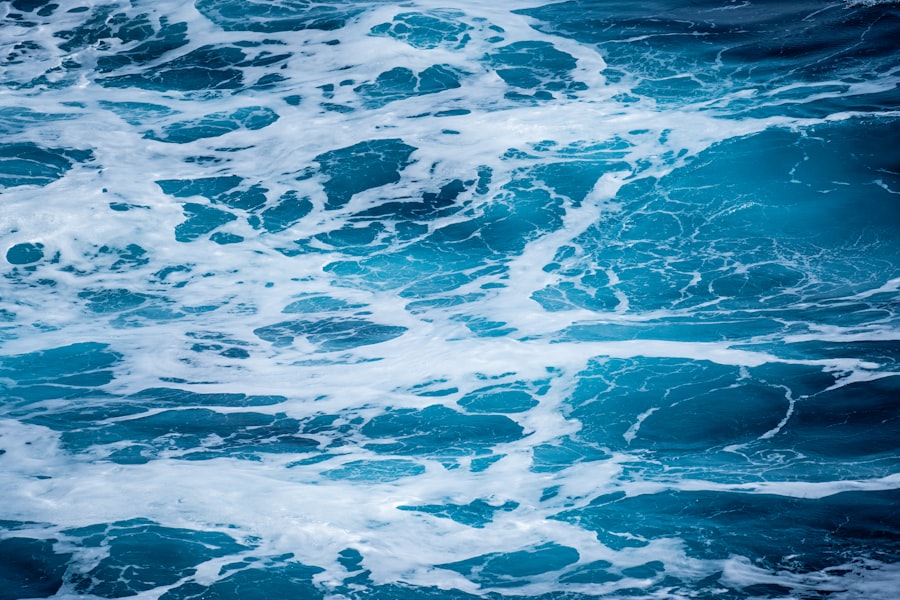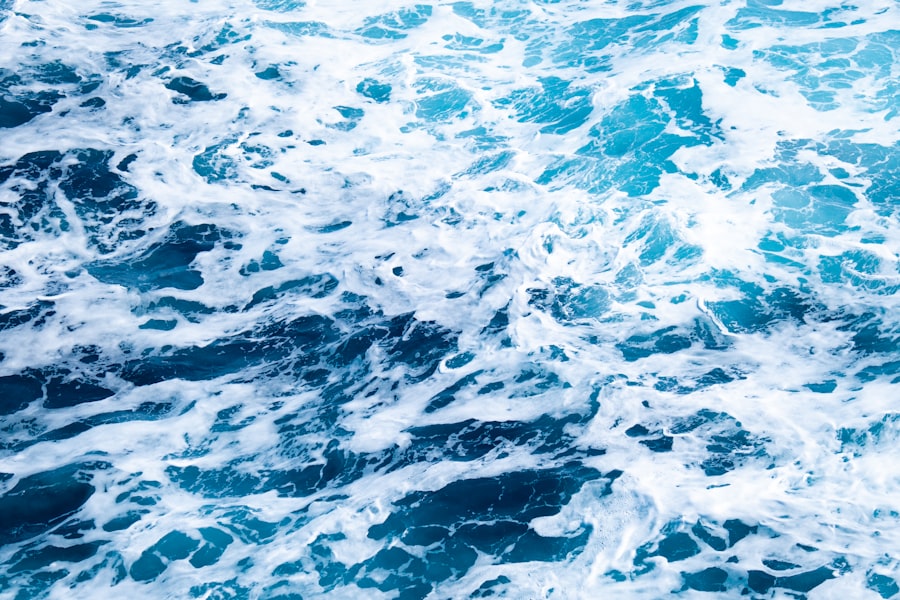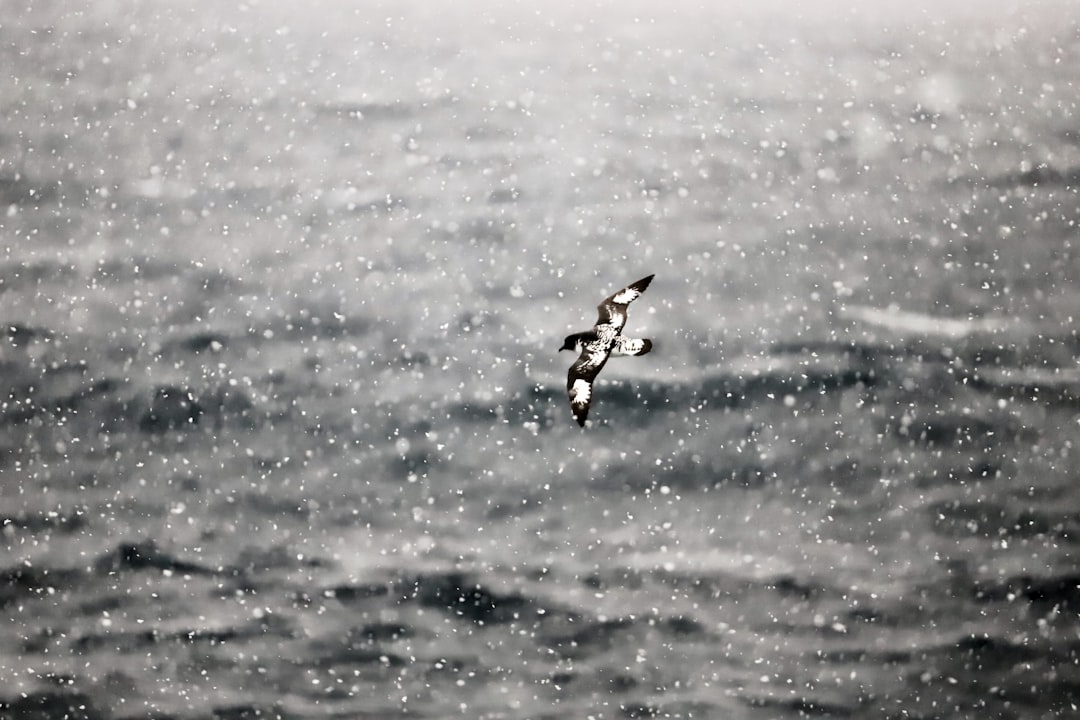The Drake Passage, a body of water situated between the southern tip of South America and Antarctica, is renowned for its tumultuous seas and significant role in global oceanic systems. Spanning approximately 800 kilometers (500 miles) in width, this passage serves as a critical conduit for marine life and ocean currents. It is often characterized by its unpredictable weather patterns and rough waters, making it both a challenging route for maritime navigation and a fascinating subject for scientific study.
The passage is named after the English explorer Sir Francis Drake, who was the first to navigate these waters in the late 16th century, although it has been traversed by indigenous peoples long before his time. The Drake Passage is not merely a geographical feature; it is a dynamic environment that plays a pivotal role in the Earth’s climate and oceanic systems. Its unique position allows for the mixing of cold Antarctic waters with warmer currents from the Pacific and Atlantic Oceans, creating a rich tapestry of marine ecosystems.
This area is not only vital for the movement of water but also serves as a critical habitat for various species, making it an essential focus for ecological and environmental research.
Key Takeaways
- Drake Passage is a narrow body of water between South America’s Cape Horn and the South Shetland Islands of Antarctica, known for its turbulent seas and strong winds.
- The geological history of Drake Passage dates back to the separation of South America and Antarctica around 30 million years ago, leading to the formation of the passage.
- Tectonic activity and plate movements continue to shape Drake Passage, with the Antarctic Plate moving northward and the South American Plate moving southward.
- The Antarctic Circumpolar Current plays a crucial role in regulating global ocean circulation and climate, as it flows through Drake Passage and connects the world’s major ocean basins.
- Climate change is impacting Drake Passage, leading to changes in ocean temperature, ice melt, and shifts in marine ecosystems, with potential implications for global climate patterns.
Geological history of Drake Passage
The geological history of the Drake Passage is a tale of transformation and upheaval that spans millions of years. Initially, this region was part of the supercontinent Gondwana, which included present-day South America, Africa, Antarctica, and Australia. As tectonic forces began to reshape the Earth’s crust, Gondwana gradually broke apart during the Late Jurassic period, around 150 million years ago.
This fragmentation led to the eventual separation of South America from Antarctica, giving rise to the formation of the Drake Passage. The opening of the Drake Passage was a significant event in Earth’s geological history, as it allowed for the establishment of oceanic currents that would have profound effects on global climate patterns. The passage itself has undergone various geological changes over time, influenced by volcanic activity and sedimentation processes.
These changes have contributed to the unique topography of the seafloor in this region, characterized by deep trenches and underwater ridges that further complicate navigation and marine exploration.
Tectonic activity and plate movements

Tectonic activity in the Drake Passage is a result of the interactions between several major tectonic plates, including the South American Plate, the Scotia Plate, and the Antarctic Plate. The movement of these plates has created a complex geological landscape marked by seismic activity and volcanic formations. The ongoing divergence between the South American Plate and the Antarctic Plate has led to the widening of the passage over millions of years, while the Scotia Plate’s movements contribute to the dynamic nature of this region.
The tectonic processes at play in the Drake Passage are not only responsible for its physical characteristics but also influence ocean currents and marine ecosystems. The shifting plates can trigger earthquakes and volcanic eruptions, which can have immediate effects on marine life and habitats. Additionally, these geological activities can alter oceanic circulation patterns, impacting climate systems far beyond the confines of the passage itself.
Role of the Antarctic Circumpolar Current
| Aspect | Details |
|---|---|
| Location | Surrounds Antarctica in the Southern Ocean |
| Role | Regulates the Earth’s climate by transferring heat and carbon dioxide around the globe |
| Impact | Affects marine life, weather patterns, and ocean circulation |
| Research | Subject of ongoing scientific studies to understand its influence on the environment |
The Antarctic Circumpolar Current (ACC) is one of the most significant ocean currents in the world, flowing continuously around Antarctica and through the Drake Passage. This current plays a crucial role in regulating global climate by facilitating heat exchange between the equator and polar regions. The ACC is unique in that it is not confined by any landmass, allowing it to circulate freely and connect all three major oceans: the Atlantic, Pacific, and Indian Oceans.
The strength and direction of the ACC are influenced by various factors, including wind patterns and water temperature differences. As it flows through the Drake Passage, the current helps to transport cold Antarctic waters northward while simultaneously bringing warmer waters southward. This exchange is vital for maintaining oceanic balance and supports diverse marine ecosystems that thrive in these nutrient-rich waters.
The ACC also acts as a barrier to warmer waters from the north, helping to preserve the cold temperatures necessary for Antarctic ice sheets.
Impact of climate change on Drake Passage
Climate change poses significant challenges to the delicate balance of ecosystems within the Drake Passage. Rising global temperatures have led to increased melting of Antarctic ice sheets, contributing to rising sea levels and altering salinity levels in surrounding waters. These changes can disrupt marine habitats and threaten species that rely on stable environmental conditions for survival.
Moreover, as ocean temperatures rise, there is a risk of altering current patterns within the Drake Passage. Such shifts could have cascading effects on global ocean circulation systems, potentially impacting weather patterns far beyond this region.
Formation of the Antarctic convergence

The Antarctic Convergence is a significant oceanic boundary that marks where cold Antarctic waters meet warmer sub-Antarctic waters. This convergence occurs at varying latitudes around Antarctica but is particularly pronounced in the Drake Passage. The mixing of these contrasting water masses creates a rich environment that supports diverse marine life, including krill, which serves as a crucial food source for many species in this region.
The formation of the Antarctic Convergence is driven by differences in temperature and salinity between the two water masses. As cold water from Antarctica flows northward, it sinks beneath warmer waters from the north, creating a dynamic zone rich in nutrients.
The ecological significance of this convergence cannot be overstated; it plays a vital role in sustaining marine biodiversity and supporting commercial fisheries.
Influence of Drake Passage on global ocean circulation
The Drake Passage serves as a critical junction for global ocean circulation systems, influencing climate patterns across the planet. The flow of water through this passage contributes to what is known as thermohaline circulation—a large-scale movement driven by differences in temperature and salinity. This circulation plays an essential role in regulating climate by redistributing heat from equatorial regions toward polar areas.
As water moves through the Drake Passage, it interacts with various currents, including the ACC and other regional currents. This interaction helps to maintain a balance within global ocean systems, ensuring that heat and nutrients are distributed effectively across different ocean basins. Disruptions to this delicate balance due to climate change or human activity could have far-reaching consequences for marine ecosystems and global weather patterns.
Biodiversity and ecological significance of Drake Passage
The biodiversity found within the Drake Passage is remarkable, with a wide array of species inhabiting its waters. From microscopic phytoplankton to massive whales, this region supports complex food webs that are intricately linked to its unique environmental conditions. The nutrient-rich waters foster thriving populations of krill, fish, seals, penguins, and seabirds, all of which play vital roles in maintaining ecological balance.
The ecological significance of the Drake Passage extends beyond its immediate marine life; it serves as a critical habitat for migratory species that travel between different oceanic regions. Many species rely on this passage as a breeding ground or feeding area during their migratory journeys. The health of these populations is closely tied to environmental conditions within the passage, making it essential to monitor changes that could impact their survival.
Research and scientific exploration of Drake Passage
Scientific exploration of the Drake Passage has been ongoing for decades, driven by its unique geological features and ecological importance. Researchers from various disciplines study this region to gain insights into climate change impacts, marine biodiversity, and oceanic processes. Expeditions often involve multidisciplinary teams utilizing advanced technologies such as remote sensing, underwater drones, and acoustic monitoring to gather data on water temperature, salinity, and marine life.
The findings from research conducted in the Drake Passage contribute significantly to our understanding of global ocean systems. By examining how changes in this region affect broader climatic trends, scientists can develop models that predict future scenarios related to climate change and its impacts on marine ecosystems. Collaborative efforts among international research teams have also fostered a greater understanding of shared challenges facing this vital area.
Human interaction and exploration of Drake Passage
Human interaction with the Drake Passage has evolved over centuries, from early explorations by indigenous peoples to modern-day scientific expeditions and tourism ventures. The passage has long been recognized as a challenging route for maritime navigation due to its unpredictable weather conditions and rough seas. Despite these challenges, it remains an important shipping lane for vessels traveling between South America and Antarctica.
In recent years, tourism has increased in this region as adventurers seek to experience its natural beauty firsthand. Cruise ships often traverse the passage during expeditions to Antarctica, providing opportunities for travelers to witness its stunning landscapes and diverse wildlife. However, increased human activity raises concerns about potential environmental impacts on fragile ecosystems within the passage.
Balancing exploration with conservation efforts is crucial to ensure that future generations can continue to appreciate this remarkable area.
Future implications and study of Drake Passage
Looking ahead, continued study of the Drake Passage will be essential for understanding its role in global climate systems and marine biodiversity. As climate change accelerates, researchers will need to monitor shifts in ocean temperatures, salinity levels, and species distributions within this region closely. Such data will be vital for developing effective conservation strategies aimed at protecting vulnerable ecosystems.
Furthermore, international collaboration will be key in addressing challenges posed by human activity and climate change in the Drake Passage. By sharing knowledge and resources among nations, scientists can work together to mitigate impacts on marine life while promoting sustainable practices in tourism and shipping industries. The future health of this critical passage depends on collective efforts to safeguard its unique environment for generations to come.
The Drake Passage is a significant body of water located between the southern tip of South America and Antarctica, known for its turbulent waters and crucial role in global ocean circulation. It was formed millions of years ago as the South American and Antarctic tectonic plates moved apart, creating a gateway for the Antarctic Circumpolar Current. For students in class 12 studying this fascinating geological feature, a related article that delves deeper into the formation and significance of the Drake Passage can be found on MyGeoQuest. You can explore more about this topic by visiting the article on MyGeoQuest.
WATCH NOW! Drake Passage: Earth’s Deadliest Waters Revealed
FAQs
What is Drake Passage?
Drake Passage is the body of water between the southern tip of South America and the northern tip of the Antarctic Peninsula. It connects the southwestern part of the Atlantic Ocean with the southeastern part of the Pacific Ocean.
How was Drake Passage formed?
Drake Passage was formed as a result of the separation of South America from the Antarctic Peninsula during the break-up of the supercontinent Gondwana around 30 million years ago. This separation created a deep and wide channel that allowed the Antarctic Circumpolar Current to flow freely around Antarctica.
Why is Drake Passage significant?
Drake Passage is significant because it serves as a major gateway for the movement of ocean currents and marine life between the Atlantic, Pacific, and Indian Oceans. It also plays a crucial role in the global climate system by facilitating the exchange of heat and carbon dioxide between the oceans.
What are the environmental conditions in Drake Passage?
Drake Passage is known for its notoriously rough seas and strong winds, making it one of the most challenging maritime routes in the world. The region experiences extreme weather conditions, including high waves, intense storms, and cold temperatures, due to its location in the Southern Ocean.
How does Drake Passage impact marine life?
Drake Passage is a key area for marine biodiversity and is home to a wide variety of marine species, including whales, seals, and seabirds. The strong currents and upwelling of nutrient-rich waters in the passage support a rich ecosystem and contribute to the productivity of the surrounding oceans.
